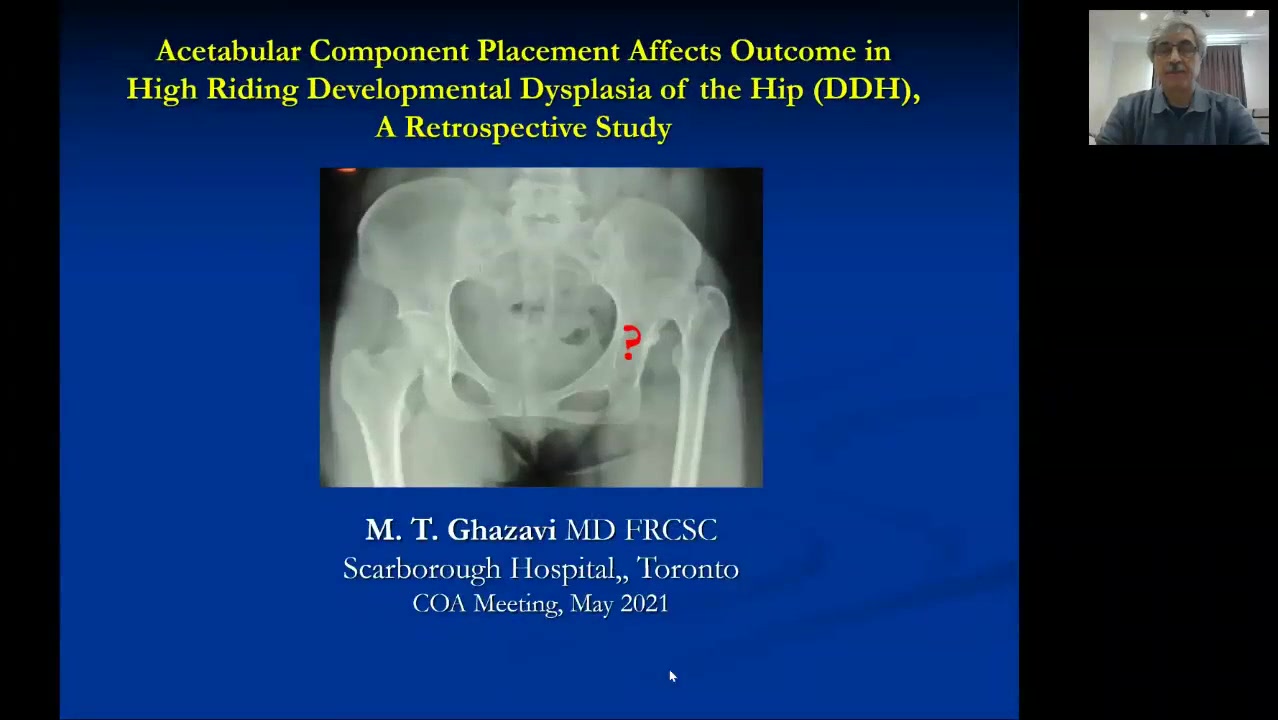Please login to view this media

- Talk
- 15/09/2021
- Canada
Acetabular Component Placement Affects Outcome in High Riding Developmental Dysplasia of the Hip (DDH), a Retrospective Study
Description
In this presentation, Mohammad Ghazavi discusses optimal acetabular component placement in cases of Crowe type 3 and 4 developmental dysplasia of the hip. He introduces the topic by emphasizing the importance of locating the true center of the acetabulum for better surgical outcomes but acknowledges conflicting evidence regarding the best placement for the cup. Citing studies from as early as 1996, he explains that placing the cup in the true acetabulum generally yields favorable results, such as reduced limping, despite some complications linked to this approach involving joint reaction forces and a higher risk of surgical issues.
Ghazavi highlights that the current consensus favors implantation within the true acetabulum, although anatomical studies reveal that the bone stock typically lies posteriorly to the true acetabulum. He suggests that aiming higher than the true acetabulum could mitigate complications without adversely affecting patient outcomes. Through a comprehensive review of cases and clinical findings, he illustrates the distinct differences between two patient groups based on the location of the acetabular components, noting that those with cups placed distal to the normal center faced more complications and expressed less satisfaction.
Ultimately, the presentation advocates for positioning the acetabular cup superior and posterior to the true acetabulum, which could lead to better coverage and improved patient outcomes while minimizing complications and dissatisfaction. Ghazavi concludes his talk by reinforcing this recommendation, underscoring the surgical implications for cases of Crowe type 3 and 4.